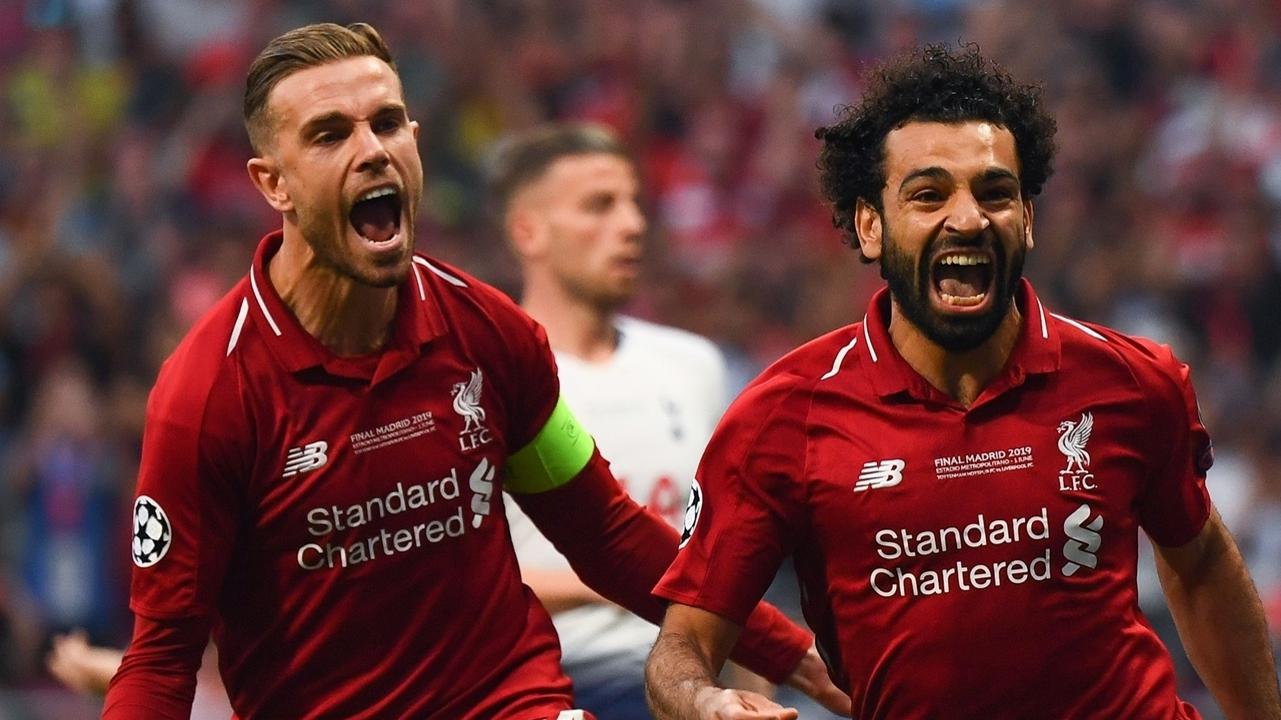Liverpool 18/19: The season witnessed a rollercoaster of emotions for Liverpool fans. From thrilling victories to agonizing near-misses, the Reds’ journey under Jürgen Klopp was a captivating blend of high-octane football and strategic brilliance. This retrospective analyzes their league performance, cup runs, tactical approaches, key players, and pivotal matches, offering a comprehensive look back at a memorable campaign.
This in-depth analysis delves into the specifics of Liverpool’s 2018-2019 season, examining their strengths and weaknesses, highlighting individual player contributions, and analyzing key tactical decisions made by manager Jürgen Klopp. We’ll explore the impact of significant transfers and injuries, examining how these factors shaped the team’s overall performance and ultimately, their final league standing.
Liverpool FC’s 2018-2019 Season
The 2018-2019 season was a momentous one for Liverpool FC, marked by exhilarating attacking football, a thrilling title race, and ultimately, a Champions League triumph. While the Premier League title eluded them, the Reds showcased their potential and laid the foundation for future success under Jürgen Klopp.
Season Overview
Liverpool finished the 2018-2019 Premier League season in second place, a single point behind champions Manchester City. Their impressive league form was complemented by a strong run in the Champions League, culminating in a victory over Tottenham Hotspur in the final. Their domestic cup runs were less successful, with early exits from both the FA Cup and the League Cup.
Team Strengths and Weaknesses
Liverpool’s key strength lay in their dynamic and high-pressing attacking style, spearheaded by Mohamed Salah, Sadio Mané, and Roberto Firmino. Their relentless pressing forced errors and created numerous scoring opportunities. However, defensive vulnerabilities, particularly in set-piece situations, occasionally hampered their progress. Inconsistency in away matches also proved to be a challenge.
Notable Individual Performances
Mohamed Salah continued his prolific goalscoring form, while Virgil van Dijk’s commanding presence solidified the defense. Alisson Becker’s arrival provided stability in goal. The midfield trio of Jordan Henderson, Georginio Wijnaldum, and James Milner provided a strong foundation, balancing creativity and defensive solidity. However, injuries to key players occasionally disrupted the team’s rhythm.
Do not overlook explore the latest data about the empire liverpool.
Results Against Top Six Rivals
| Opponent | Date | Result | Goalscorers |
|---|---|---|---|
| Manchester City | October 7, 2018 | 0-0 | – |
| Manchester City | January 3, 2019 | 2-1 | Salah, Mané |
| Chelsea | September 29, 2018 | 1-1 | Mané |
| Chelsea | April 14, 2019 | 2-0 | Salah, Firmino |
| Tottenham Hotspur | October 27, 2018 | 2-1 | Firmino, Salah |
| Tottenham Hotspur | June 2, 2019 (Champions League Final) | 2-0 | Salah, Origi |
| Arsenal | November 3, 2018 | 1-1 | Firmino |
| Arsenal | May 2, 2019 | 5-1 | Salah (3), Firmino, Mane |
| Manchester United | December 16, 2018 | 3-1 | Salah, Shaqiri, Mané |
| Manchester United | March 30, 2019 | 2-1 | Salah, Wijnaldum |
Managerial Approach and Tactics
Jürgen Klopp’s high-intensity, gegenpressing style remained central to Liverpool’s approach. The team predominantly employed a 4-3-3 formation, leveraging the pace and skill of their attacking trio. This system allowed for quick transitions between defense and attack, utilizing the full width of the pitch.
Tactical Formation and Effectiveness
The 4-3-3 formation proved highly effective in many matches, allowing for numerical superiority in midfield and creating numerous attacking opportunities. However, the system’s vulnerability to counter-attacks required a disciplined defensive approach. Adaptations to the formation were made depending on the opponent and the match situation.
Comparison to Previous Seasons
Compared to previous seasons under Klopp, the 2018-19 season saw a greater emphasis on defensive solidity, particularly with the arrival of Virgil van Dijk. While the high-pressing style remained, the team demonstrated improved tactical flexibility and a greater ability to control games through possession.
Tactical Diagram (Illustrative Example: Champions League Final), Liverpool 18/19

A typical 4-3-3 formation in the Champions League Final saw Alisson in goal; a back four of Alexander-Arnold, Matip, Van Dijk, and Robertson; a midfield of Fabinho as the anchor, Henderson and Wijnaldum providing support and attacking impetus; and the front three of Salah, Firmino, and Mané.
Key Players and Their Impact

Three key players significantly impacted Liverpool’s success: Mohamed Salah, Virgil van Dijk, and Alisson Becker. Their contributions extended beyond individual statistics, influencing team dynamics and overall performance.
- Mohamed Salah: Exceptional goalscoring, creating chances, and direct running. Weaknesses included occasional inconsistency and a reliance on his right foot. Overall impact: immense, crucial goalscorer.
- Virgil van Dijk: Dominant aerial presence, exceptional passing range, and strong leadership. Weaknesses were few, occasional lapses in concentration. Overall impact: transformed the defence, provided stability.
- Alisson Becker: Reliable shot-stopping, commanding presence in the box, and excellent distribution. Weaknesses were minimal. Overall impact: Provided stability and confidence to the backline.
Significant Matches and Turning Points: Liverpool 18/19
Three matches significantly impacted Liverpool’s season: the draws against Manchester City, the victory against Manchester United, and the Champions League final victory over Tottenham.
The draws against Manchester City highlighted the tight title race and Liverpool’s need for greater consistency.
The victory against Manchester United showcased Liverpool’s attacking prowess and provided a crucial boost to their title aspirations.
The Champions League final victory over Tottenham capped off a remarkable season, demonstrating the team’s ability to perform under pressure.
The 2018-2019 season proved to be a significant stepping stone for Liverpool, showcasing the team’s potential and laying the groundwork for future successes. While the ultimate Premier League title eluded them, the season revealed a team brimming with talent, tactical flexibility, and unwavering determination. Analyzing this campaign provides valuable insight into the evolution of Klopp’s Liverpool and the building blocks that ultimately led to their Champions League triumph and subsequent Premier League dominance.
/cdn.vox-cdn.com/uploads/chorus_image/image/60059933/950893166.jpg.0.jpg)
